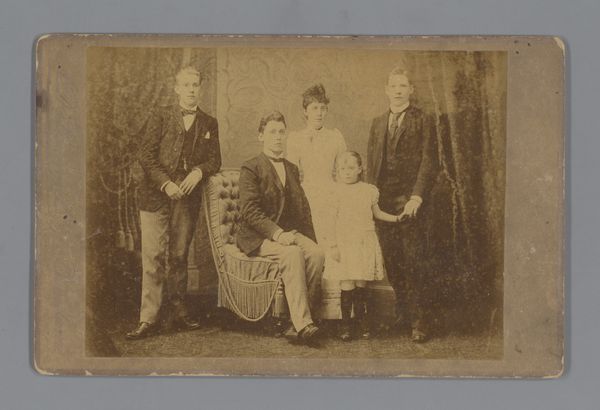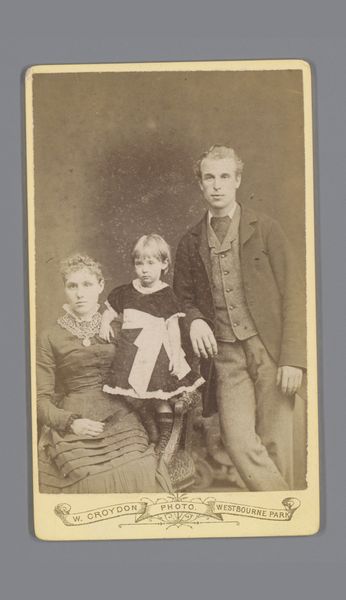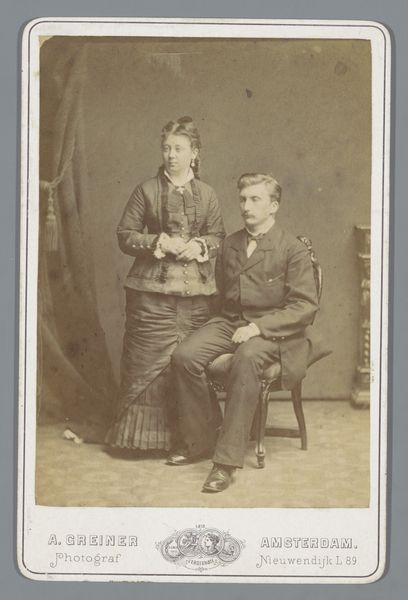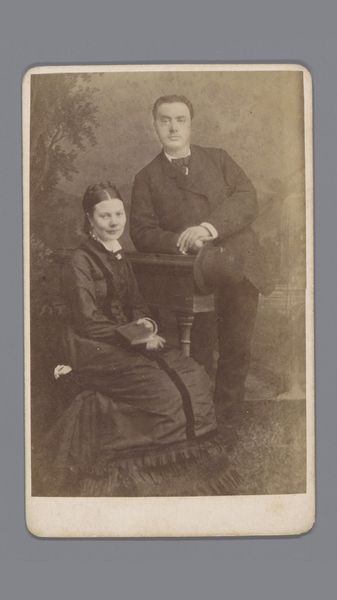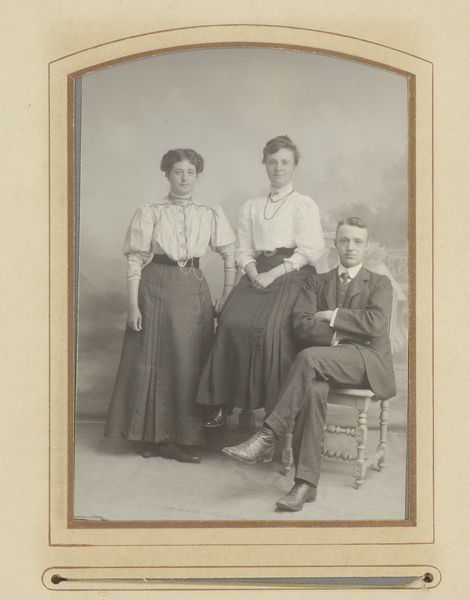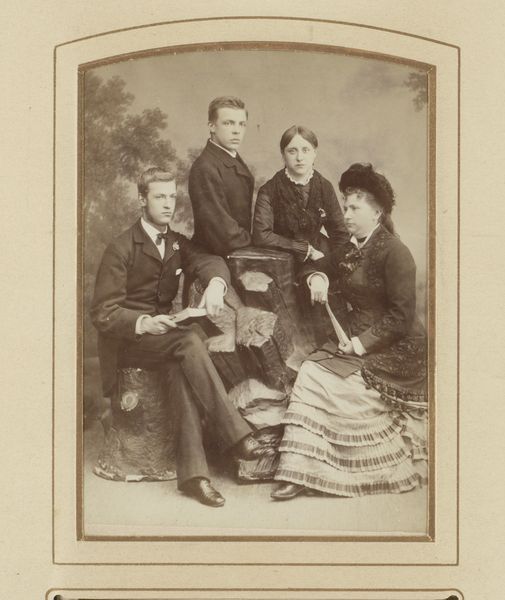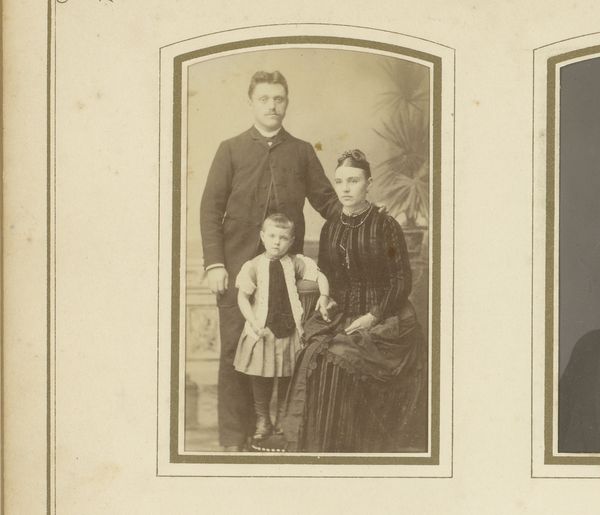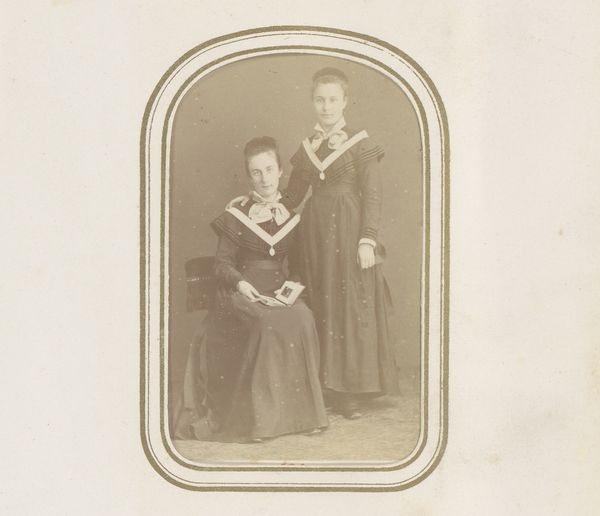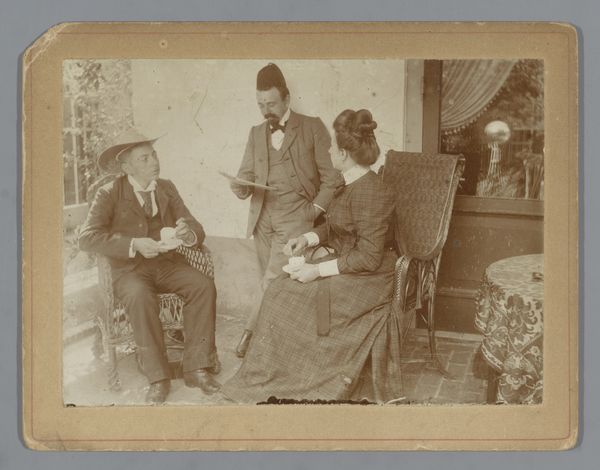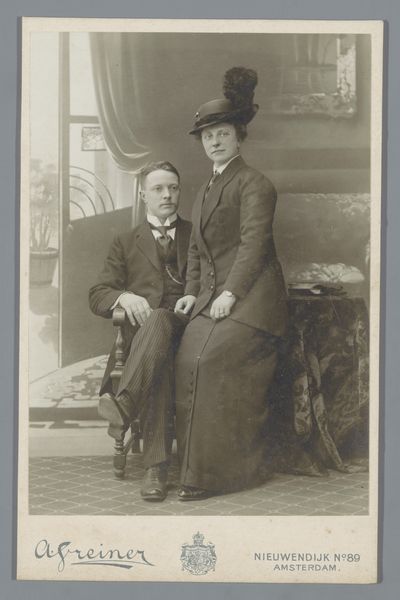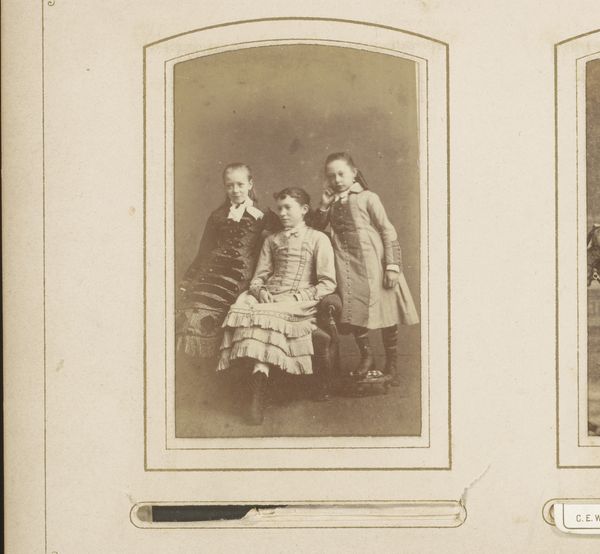
Portret van (vermoedelijk) een echtpaar met twee kinderen c. 1870 - 1890
0:00
0:00
daguerreotype, photography
#
portrait
#
daguerreotype
#
photography
#
historical photography
#
19th century
#
genre-painting
Dimensions: height 110 mm, width 166 mm
Copyright: Rijks Museum: Open Domain
Editor: Here we have "Portrait of (presumably) a couple with two children" by Maurits Verveer, dating roughly from 1870 to 1890. It’s a daguerreotype, so a very early form of photography. There's a certain formality to the arrangement of the figures; they seem quite serious. I wonder what sort of social conventions influenced this image? Curator: A very astute observation! Studio portraiture like this was a relatively new phenomenon at the time, and its development as a widespread practice was heavily influenced by social aspirations. Think about the democratizing potential of photography. Before this, only the wealthy could afford painted portraits. What did photographic portraiture offer to the aspiring middle classes? Editor: The possibility to create a record of family, something that signals status. I suppose the formal clothing and deliberate poses contribute to that sense of respectability, of carefully constructed image? Curator: Exactly! These were commodities carefully tailored to express bourgeois values of domesticity and family cohesion. And the photographer, whose name we see imprinted along the edges, also participates in this cultural performance. What do you think is conveyed through this inscription and other choices? Editor: That it wasn’t just about taking a picture, but about participating in a wider commercial and cultural network? The photographer essentially lent his stamp of approval, further legitimizing the portrait as a symbol of societal integration. Curator: Precisely! These portraits were more than just likenesses. They actively performed and reinforced social norms, contributing to the very definition of 'family' and 'respectability' within that era. Editor: I hadn't thought about it that way, as such an active participation in constructing ideas about society, but that makes a lot of sense. Thank you. Curator: A pleasure. It's fascinating to consider how even seemingly simple family portraits are loaded with social and cultural meaning when seen through the lens of history.
Comments
No comments
Be the first to comment and join the conversation on the ultimate creative platform.

